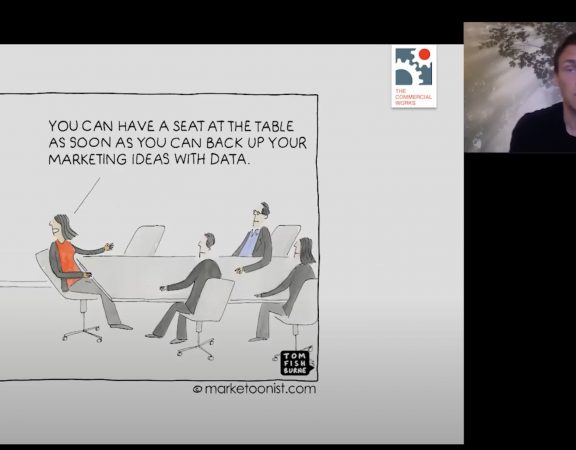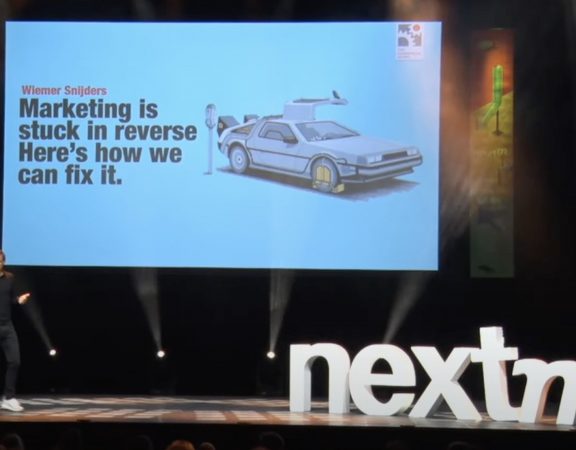Data and metrics are more important than ever for commercial decision making. But some areas within the field decrease marketing effectiveness. It’s time to rethink how data is going to help brands grow.
At the dawn of social media, the marketing echo-chamber sounded loud and united: consumers would massively share ‘content’ about brands; a new advertising era was born. It took years before brands moved passed the massive-sharing illusion and realized that if you want your brand or product to be seen, you must pay for it.
So it goes with many new marketing toys and tools: someone predicts massive behavioural change and commercial opportunity, the industry jumps on the bandwagon and then it takes a lot of time- and money-wasting to find out that the new toy or tool was highly over-sold.
For the past few years, the excitement is to be found in data; big data, AI, machine learning, algorithms, you name it. I know from two decades of personal experience that data proves valuable in many situations. Some popular areas within data driven marketing (DDM), however, are, I believe, dead-end roads that can be avoided. Let me explain.
Acquisition vs. retention
Over the years, those who cared to look, have consistently found that brands grow by increasing the size of their customer base. This is an instant challenge to DDM, as most of its efforts are based on analysing existing customers. The focus is mainly on trying to improve frequency, retention or other loyalty metrics, but few are focused on growing the customer base.
There are a couple of logical reasons for this one-sided focus on loyalty. First, the data that’s available. Marketers have more data about current customers than about potential customers. Not that customers and non-customers of your brand are so different but delivering a message directly to a current customer is just far easier.
Second, marketers have been fed with the idea that ‘it is five times more cost-effective to keep an existing customer than to acquire a new one’. It might look easier—and therefore cheaper—to sell to an existing customer, because your current customer has already found, bought and experienced your brand. So, of course the chance that this customer is going to respond to your message is much larger compared to those who have not (or long ago).
Be aware, however, that a brand’s customer base always has the same shape: they have lots of light buyers and a few heavy buyers. Bigger brands have, in absolute terms, far more buyers in general and thus also more heavy buyers. In relative terms, however, bigger brands only have slightly more heavy buyers than smaller brands. We don’t observe brands that are big because they have relatively more loyal buyers than other brands in the category.
It might sound tempting to identify and target or market to the heavy buyers with your data and your algorithms, but you can’t change the shape of your customer base. It just doesn’t happen. Despite this observation that has been documented for such a long time, I frequently stumble upon this heavy buyer fallacy. The pressure on increasing ROI only contributes to this one-sided focus. Which brings me to the next topic.
Selections & segmentations
As a direct consequence of the heavy buyer fallacy, DDM often uses optimization strategies by making selections towards buyers with a higher chance to buy. Making these selections sharper and narrower will lead to higher ROI calculations. But again, the only reason your ROI looks good is that the ratio of people responding is larger. The sharper you target, however, (1) the less people you reach and (2) the higher the number of people you target that were going to buy you anyway – something which is also known as a selection-effect. In plain English: money out of your own pocket.
Making selections implies reaching less people, while brands grow by reaching more people. Yes, you might argue that you don’t reach less people, because you market all your segments and thus still reach all your category buyers. But don’t forget: more segments equal more cost. Does your increased conversion outweigh your additional costs? In my daily work, there is no shortage of brands using segmentation (studies) to inform their decision making. However, they are rarely supported by a proper business case.
Personalisation
Personalisation has been presented as one of the silver bullets of DDM for the past few years. The promise is self-evident: ideally, you deliver the right message to the right person at the right time. As intuitive as it sounds, a fair question to ask is: does it work?
Gartner was recently quite clear about it: they concluded that most brands will soon abandon their personalisation efforts. They mention various reasons around data management and governance, e.g. privacy issues, keeping up with emerging technology and growing data sources. More importantly, the returns of personalisation are simply disappointing.
I personally think that most brands today have a lot of data, but not enough of the data that informs them how to treat their customers differently to maximize response. And if you happen to have the right data, the needs and behaviours within one single customer are so volatile that the false positives and false negatives will undermine the cost-effectiveness of personalisation models. In short, Gartner’s prediction, I believe, is going to come true…
Ethics
Related to previous topic are the data brokers. What, and how much do they collect? Who do they sell it to? How sensitive is the information and how is sensitive information used? Data providers broaden and deepen their data collections but are reluctant to answer the above questions. Brands just keep on pushing the mantra ‘more data is better’. Consumers, however, increasingly feel that their privacy is undermined. Not really surprising given the data breaches, consent violations and other dubious uses of data that have been publicly reported in recent years. Despite these incidents and the introduction of GDPR, I feel that this industry hasn’t adjusted its moral compass yet around the use of data.
New roads ahead
To get on roads with sunnier destinations, I believe there are five fundamental changes needed:
- Pay more attention to non-buyers and light buyers. It is at this side of the distribution where the changes occur if brands grow or decline.
- Look beyond ROI: ROI can look good paper but usually doesn’t take selection-effects into account. To get a grip on those effects, do more experiments. Also, focus on ROI stimulates short-term activities and undermines brand building, which is crucial for adding new customers to your base.
- Pay attention to all sales drivers. That means also the ones that are harder to measure. We know creativity, brand recognition and the use of traditional media, among others, increase sales. These might be harder to measure than a cookie, but that doesn’t mean you shouldn’t try to get a better understanding of these elements in the marketing mix.
- Build proper business cases. Many business cases I see are built to get resources and get something going. These are usually built upon a lot of assumptions. But it is also crucial to know whether the plan worked or not. Tedious, perhaps, but crucial to continuously improve the value of DDM.
- Know that not all data is created equal. Lots of data is just noise and is not going to help you improve decision making. Dare to separate the wheat from the chaff. Some data is private and should never be part of a commercial decision.
As the added value of marketing becomes increasingly questioned—for reasons that make sense, I might add—we need to allow ourselves to be sceptical about assumptions, conventions and future developments. So, buckle up, be wary of the potholes and arrive safely at your destination…




